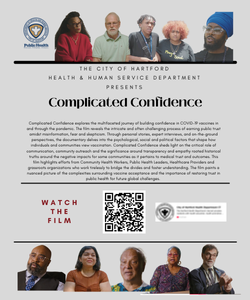By Avik Jain Chatlani, PRISM
Recently aired footage showed Brazilian citizens—who were deported from the U.S. in January—with their hands and ankles shackled. Brazil’s Minister of Human Rights Macaé Maria Evaristo appeared shaken by the scene, telling the press that children with autism “who went through very serious experiences” were on board the deportation flight. She said they were not allowed to use the bathroom or given water.
Latin America’s richest, most powerful, and most populous country barely responded to the claims.
“We had a very sober reaction,” Minister of Justice Ricardo Lewandowski said. “We don’t want to provoke the American government.”
Shackles, used on families. This is a familiar image we see when we leaf through the long, troubled history of the United States. It seems impossible for the victims of American power to escape the chains, whether it be the enslaved civilizations that were torn across the ocean, the millions always being pushed over ever-expanding borders, or the prisoners who still languish in black sites throughout the Caribbean and the Middle East.
In the 1962 book-length essay “The Middle Passage” that documents writer V.S. Naipaul’s return to the West Indies—where he was born to the children of Indian emigrants—he describes the immigrant societies as “materialist” and “colonial,” defined by histories of brutality. The little island nations—slave societies, surrounded by rough waters—are ruled “autocratically, if benevolently,” limited by their small size and remoteness. If one were to replace the word “small” with “behemoth,” this would be an incredibly apt description of the United States. No matter how big and powerful it has become, the country remains remote, self-conscious, and self-centered, while its official policy maintains a pathetically narrow vision: utterly unable to see the other. Built on immigration—or, more accurately, built on chattel slavery and wage slavery—the U.S. continues to behave as a clumsy, brutal colonial society.
When we turn our attention to the victims of the day—millions upon millions of unmoored, undocumented people, deprived of the rights of residence or citizenship—we can see that they are being punished, at an accelerated pace, for the crime of having enriched the wealthiest country on Earth. The largely Latin American migrant population in the U.S., many of whom live in ghettos, doing the worst jobs, often in conditions that resemble modern slavery, is treated as a political prop. Pushed and pulled back and forth, these individuals are fodder for the hatreds or necessities of the day.
Large numbers of these people come from societies that have been squeezed by U.S. sanctions, drained by Canadian and European firms, or flooded with American weapons. The governments that issued their identity documents are seemingly unable to advocate for them or provide them with proper jobs and proper futures. The force of capital, of the markets in New York, has overtaken them. They go where there is work, where they can survive. If they cannot live with dignity, they reason that maybe, at least, their children will be better placed.
Most American citizens seem unable or unwilling to understand this simple truth. They choose, instead, to close their minds and their hearts and give power to those who are willing to do the dirty job of waking people up in the middle of the night, shackling them, putting them in cells, and later loading them onto buses or planes.
Such a tiring continuation of history faces little to no opposition. The Democratic Party, which has supported anti-immigrant emergency measures and legislation, lost all remaining claims to legitimacy throughout the Gaza genocide. Via the Biden-Harris administration, elected and appointed Democrats offered practically unanimous support to the slaughter, mutilation, and starvation of more than 200,000 Palestinians before the appalled eyes of the world. The arming and financing of the Israeli regime took place while attempting to upkeep a facade of diversity and tolerance at home—something that proved challenging when liberal university presidents set heavily armed police officers on students and faculty members. It’s no surprise that the Democrats’ practice of vote bank politics—an attempt to win over new citizens despite seeing them as nothing more than potential voters—has crumbled upon confronting a very popular mass deportation policy.
The most vulnerable inhabitants of the United States are now left with the mere pieces of a civil society to protect them: a handful of alternative media outlets and municipal governments, as well as the individual labor of teachers, social workers, translators, doctors, and pro-bono lawyers, who attempt to ease the pain. There is, however, no real ability to stop what is causing it.
It is a mistake to view a centuries-old history of enslaving, subjugating, incarcerating, and torturing populations as the responsibility of a single party or a single president. This is an entrenched system, one populated by a sizable number of electors who relish or tolerate livestreamed violence. From Guantánamo to Abu Ghraib, from the invasion of Iraq to the genocide in Palestine, from the pager terrorist attacks in Lebanon to family separations along the U.S.-Mexico border, we have confirmed time and time again that no matter how many anti-war protests we attend, the American public is, in the best-case scenario, largely indifferent to atrocities. The American newspapers, meanwhile, spread disinformation about these horrors or, alternatively, cheer them on with gusto.
Perversely, the ubiquitous notion of freedom has long been prostituted by the state, which has crafted a doublespeak of unparalleled cynicism. There is no liberation in sight. As the land overflows with detainees, America is now accelerating the export of its prisoners. However, Donald Trump has yet to match the numbers attained by former President Barack Obama’s vile administration. None of this should surprise us. Not far off the coast of Florida, we can point to Guantánamo Bay as a glaring example of American impunity. Or even the situation on the mainland, where two million people are in jails or Immigration and Customs Enforcement facilities, with millions more on parole or weighed down by criminal records. In mid-2024, more than five million people were being supervised by the American security apparatus. This is similar to the number of enslaved peoples on U.S. soil at the start of the Civil War.
Rather than freedom, the U.S. is better defined by its entanglement with servitude. The Jim Crow South inspired entire projects, from Nazi Germany to apartheid South Africa. In her 2020 book “Caste: The Origins of Our Discontents,” Pulitzer Prize-winning journalist Isabel Wilkerson writes about how researchers visited the U.S. to study how the state had managed to subjugate its African American population. And, on its own initiative, the U.S. has set up entire puppet apparatuses to act as prisons: Carceral regimes in Egypt, Saudi Arabia, Jordan, and El Salvador exist with American financial and technical backing. Israel—an American-funded garrison state—is built on top of Palestine, keeping more than seven million people in a situation of apartheid and occupation. High-tech massacres are periodically unleashed by this prison, built as a sort of watchtower in the Levant.
In his book “The Message,” published last year shortly after visiting this extension of the United States, writer and journalist Ta-Nehisi Coates recalls a moment when a Palestinian American friend informs him that the Museum of Tolerance in Jerusalem was built directly on top of a Muslim cemetery. Upon hearing this, Coates knows that just a bit of research will confirm the claim. Still, he struggles to accept it. I found myself surprised by his disbelief. It’s certainly a haunting detail and a familiar story. Very American. Where else would the money or idea to build such a structure have come from?
Despite the efforts of its dearest vassal state, the U.S. has no equal when it comes to erecting museums and monuments in the name of all sorts of memories and causes. In “The Idea of America,” the lead essay for “The 1619 Project,” journalist Nikole Hannah-Jones notes that in addition to building up America’s agriculture, railway lines, and industrial wealth, enslaved peoples also “built the plantations of George Washington, Thomas Jefferson, and James Madison, sprawling properties that today attract thousands of visitors from across the globe captivated by the history of the world’s greatest democracy. They laid the foundations of the White House and the Capitol, even placing with their unfree hands the Statue of Freedom atop the Capitol dome.”
What was their reward? Hundreds of years of slavery? Another 100 years of terror and quasi-slavery into the late-1960s?
For miserable wages, all of this grandeur is cleaned, buffed, maintained, and refurbished today by brown and Black hands, which can be cuffed whenever the ruling class—far more diverse today, although they wear white masks—deems it favorable in the eyes of public opinion. Look at how America treats those who construct and upkeep its greatness, its myths.
As we watch bodies paraded in shackles, it’s worth remembering that the foot soldiers who are conducting the very public deportation operations in American communities—the immigration officers, the jailers, the Border Patrol, the customs officials, the low-level bureaucrats—are also in a kind of prison. They hail from all kinds of racial backgrounds; they often speak more than just English. The insatiable country has changed and grown so much that the system sustains itself on what it also hates. It consumes itself. And the sustainers of this system often wear a uniform simply because they have been channeled toward it. Limitless resources are pumped into the military, the National Guard, the police, and the prisons. The uniform often implies a good wage, a way to support a family, and even to get papers. There are few decent opportunities to be had in such an uneven economy. And there is little hesitation to be involved in cruelty, especially when society has made great efforts to normalize it.
The casual violence we are seeing is a way for millions without prospects to make a living, in the same way that underemployed factory workers across the United States spend their shifts churning out bombs. They will try to stay afloat, surviving inflation and other pressures, by committing atrocities against those who are also trying to survive. Millions of people treading water, as if they’re stranded in the Middle Passage, or the Gulf of Mexico, with no means of escape. Treading water, in an ocean of a nation—a project, an empire—that shows no signs of weakening, no signs of mercy.
So many of us are drowning.
This editorial was originally published in PRISM.
Photo by Tima Miroshnichenko: https://www.pexels.com/photo/persons-hands-in-handcuffs-6266772/





